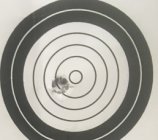Been there done that.
First, I would have a competent-benchrest proven, smith go over the gun.
Second, I would actually work up a load using proven bullets, powder and primers. Be willing to try different proven bullets or powder. My Savage 6br, Varget and and cci450 primers will agg in the .1s at 100.
Third, test loads on calm days. With a healthy gun, if you can’t work up a load that will agg. at least in the .2s, you know it is either your shooting or load development skills or a bad barrel. Most likely the former two.
Your first foray using better equipment is not going to have you producing top quality ammo. There are fine nuances that you hopefully learn over time and through loading thousands of loads with priceless input from the world class people on this site.
The more detail you provide regarding your
process, the more helpful feedback you will receive.
Right now, with the limited info you have provided, you are just getting WAGes.















